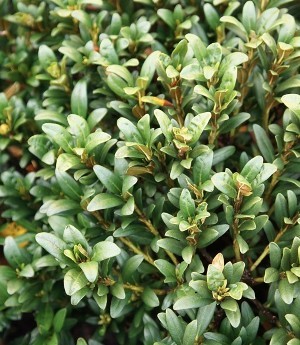Falconer rhododendron
(Rhododendron falconeri)

Description
Rhododendron falconeri is a species of flowering plant in the heath family Ericaceae, native to the Himalayas. It is commonly known as the Falconer's Rhododendron or the blue Himalayan rhododendron. Rhododendron falconeri is a large evergreen shrub or small tree that can grow up to 20 meters tall in the wild. Description Rhododendron falconeri has leathery leaves that are dark green in color, shiny and oblong-lanceolate in shape, with pointed tips, and measure 10-20 cm in length. The leaves are arranged in whorls of 3 or 4 at the end of branches. The flowers of Rhododendron falconeri are showy and fragrant. They are bell-shaped and are carried in clusters of 10-20 flowers. The flowers are typically 5 cm long and have a diameter of 3-4 cm. The corolla of the flower is blue-purple in color and has reddish-brown markings. The flowers bloom in the months of May and June. Distribution Rhododendron falconeri is native to the eastern Himalayas, from Bhutan to Nepal. It grows at altitudes between 2,000 and 3,500 meters above sea level in subtropical and temperate forests. Ecology Rhododendron falconeri is an important plant in its native range, providing food and habitat for many animal species. The nectar-rich flowers attract a variety of insects, including bees, butterflies, and moths. The plant also provides shelter for birds and small mammals. Cultivation Rhododendron falconeri is a popular ornamental plant in gardens and parks, due to its beautiful and showy flowers. It can be grown in temperate and subtropical regions, and prefers well-drained acidic soil with a pH between 4.5 and 6.0. It requires partial shade and protection from strong winds. Propagation of Rhododendron falconeri can be done through seeds, cuttings, or grafting. The seeds should be sown in a mixture of peat moss and sand, and kept in a warm and humid environment. Cuttings should be taken from young shoots in the spring, and rooted in a mixture of peat moss and sand. Grafting is the preferred method for propagating Rhododendron falconeri, as it produces plants that are true to the parent plant. Uses Rhododendron falconeri has several medicinal uses in traditional medicine. The bark and leaves of the plant are used to treat fever, cough, and inflammation. The plant also has antimicrobial and antioxidant properties, and is used to treat skin diseases and wounds. In addition to its medicinal uses, Rhododendron falconeri is also used for timber, fuelwood, and charcoal production in its native range. Conservation Rhododendron falconeri is classified as a species of least concern by the International Union for Conservation of Nature (IUCN). However, like many plant species in the Himalayas, Rhododendron falconeri is threatened by habitat loss due to deforestation and climate change. Conservation efforts are needed to protect the species and its habitat. Conclusion Rhododendron falconeri is a beautiful and important plant species in the Himalayas. Its showy flowers and leathery leaves make it a popular ornamental plant, while its medicinal properties and ecological significance make it an important plant in traditional medicine and ecology. However, conservation efforts are needed to protect the species and its habitat from threats such as deforestation and climate change.
Taxonomic tree:







